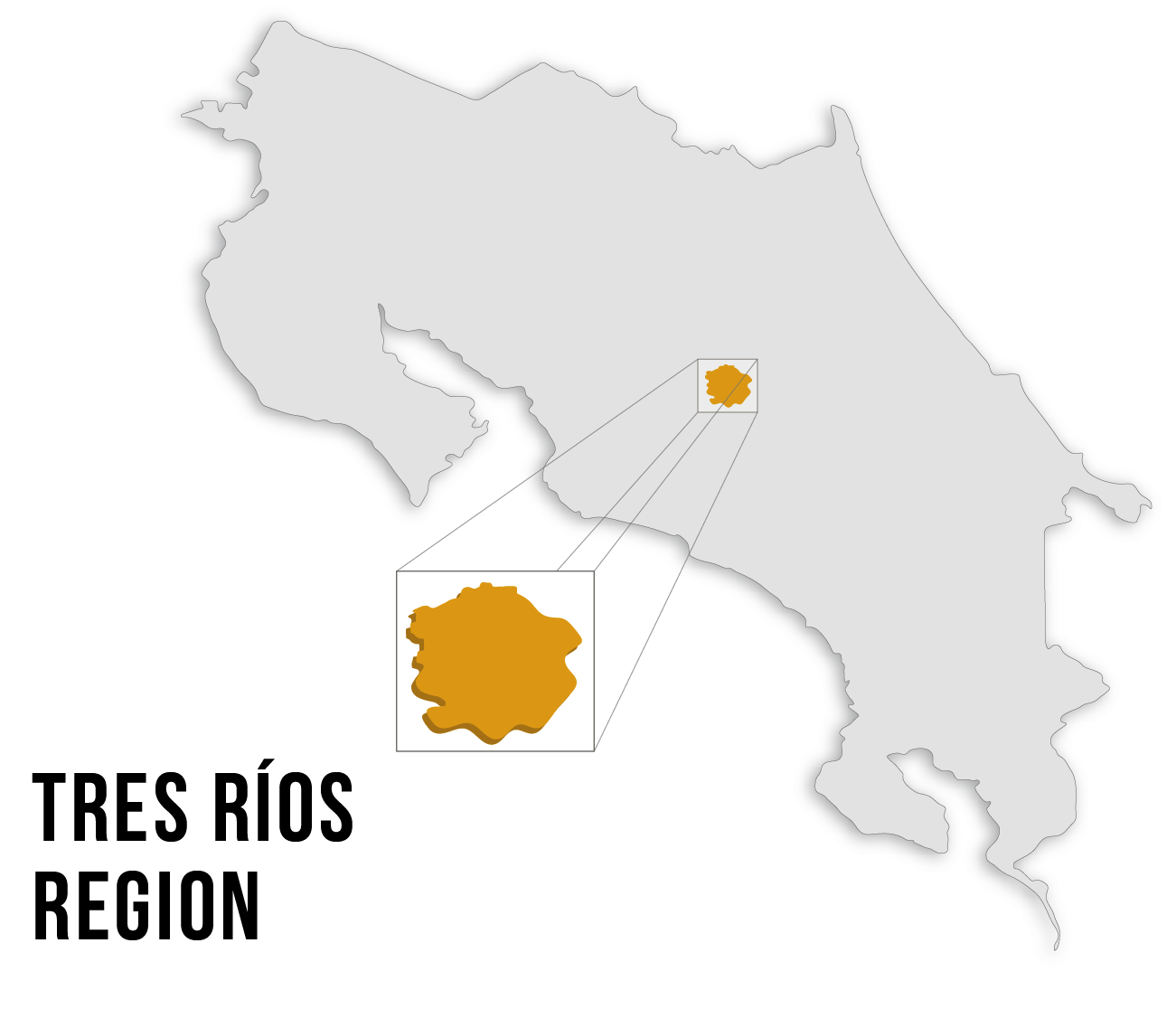Regions
Guanacaste
Although it is called the Guanacaste Region, with the name of one of the seven provinces of Costa Rica, this coffee zone is distributed in the provinces of Guanacaste, Puntarenas and Alajuela in mountainous parts such as the Guanacaste Mountain Range and the Central Volcanic Mountain Range.
Its production ranges from 50,000 to 70,000 bags of coffee, made up of small micro mills distributed throughout each of the areas of this beautiful region, which is characterized by a warm climate. In this region, a grain called Pacifico is produced, which is small and hard, with an open fissure and a delicious aroma. Sarapiquí and San Carlos produce a grain classified as Atlantic.
In this coffee-growing region are the only coffee plantations in the world in a Blue Zone, this is in the Peninsula de Nicoya, which is one of the 5 zones in the world, which people live longer than average and this according to studies due to their lifestyle life, including their diet.
Weather Characteristics:
They have two well-defined seasons, the dry and rainy seasons. In San Carlos and Sarapiquí the rainy season is broader and there are even rains in the summer. Sarapiquí and San Carlos have average rainfall of 3,500 millimeters while Guanacaste and Puntarenas have 2,250 millimeters.
Altitude:
Sarapiquí and San Carlos: 600 to 900 meters above sea level.
La Península de Nicoya: 600 to 1,000 meters above sea level.
Abangares, Tilarán, Monte Verde and Montes de Oro: 600 to 1,350 meters above sea level, this being the sub-region with the highest coffee plantations in the Guanacaste Region.
Soils:
The plantations comprise more than 4,900 acres with soils of volcanic origin, mostly in the provinces of Guanacaste and Puntarenas.
Harvest Time:
Sarapiquí and San Carlos: July to December.
Guanacaste and Puntarenas: October to February.
Cup Features:
It is a smooth, balanced, fruity cup with a delicious aroma.
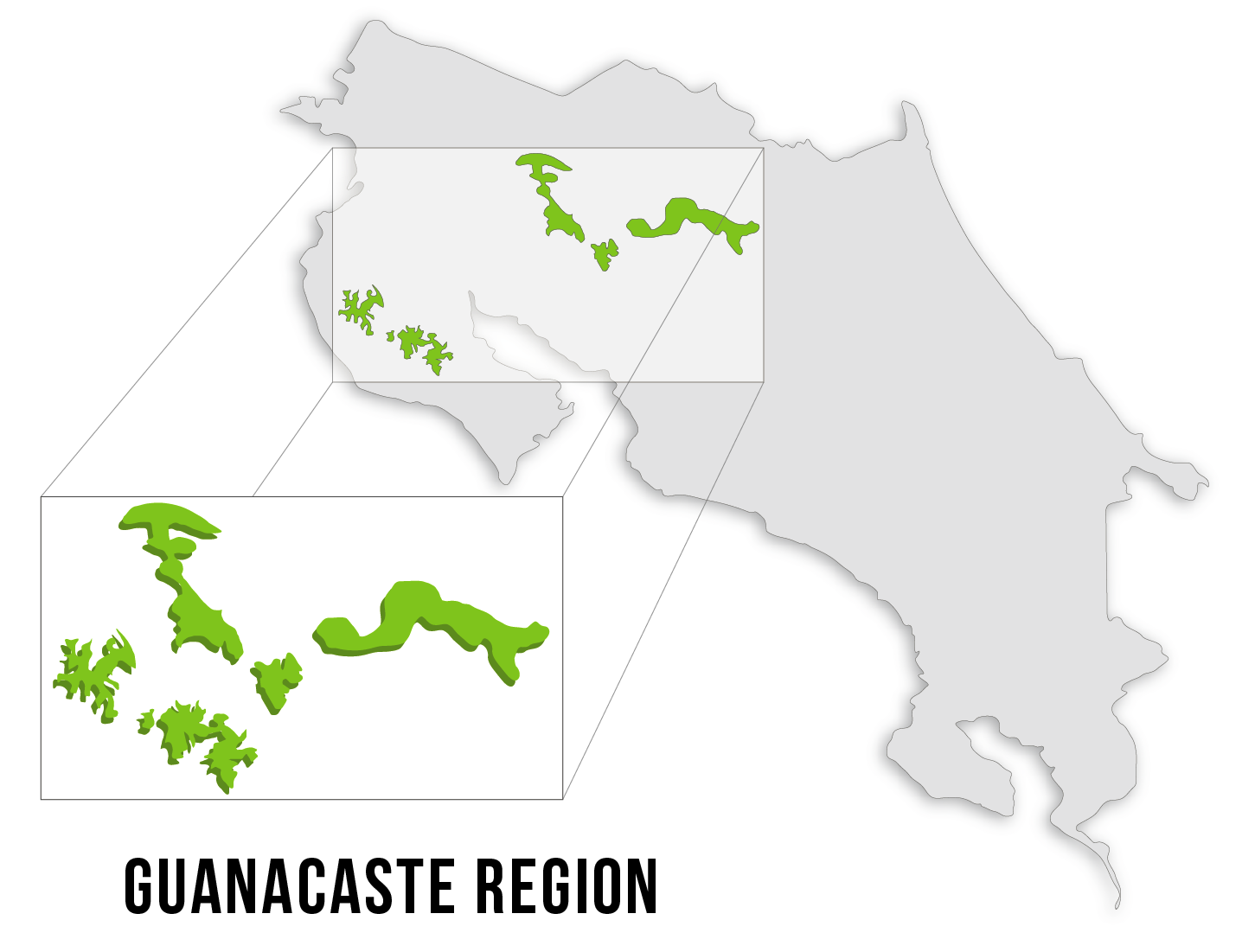
Western Valley
It was in the 19th century that coffee was brought from the Central Valley to this area, which today has become one of the most important coffee growing areas in Costa Rica.
Climate Characteristics:
With two well-defined seasons, wet and dry, the Central Valley has a total rainfall of 2,250 millimeters in 160 days a year and a humidity of 81%.
Altitude:
From 700 to 1,700 meters above sea level.
Soils:
It is grown in valleys and slopes on very fertile volcanic soils.
Harvest Time:
From November to February.
Total Coffee Production:
From 800,000 to 1,000,000 quintales (100 pound bag)
Cup Features:
Very good acidity, body and aroma. It is a very balanced cup.
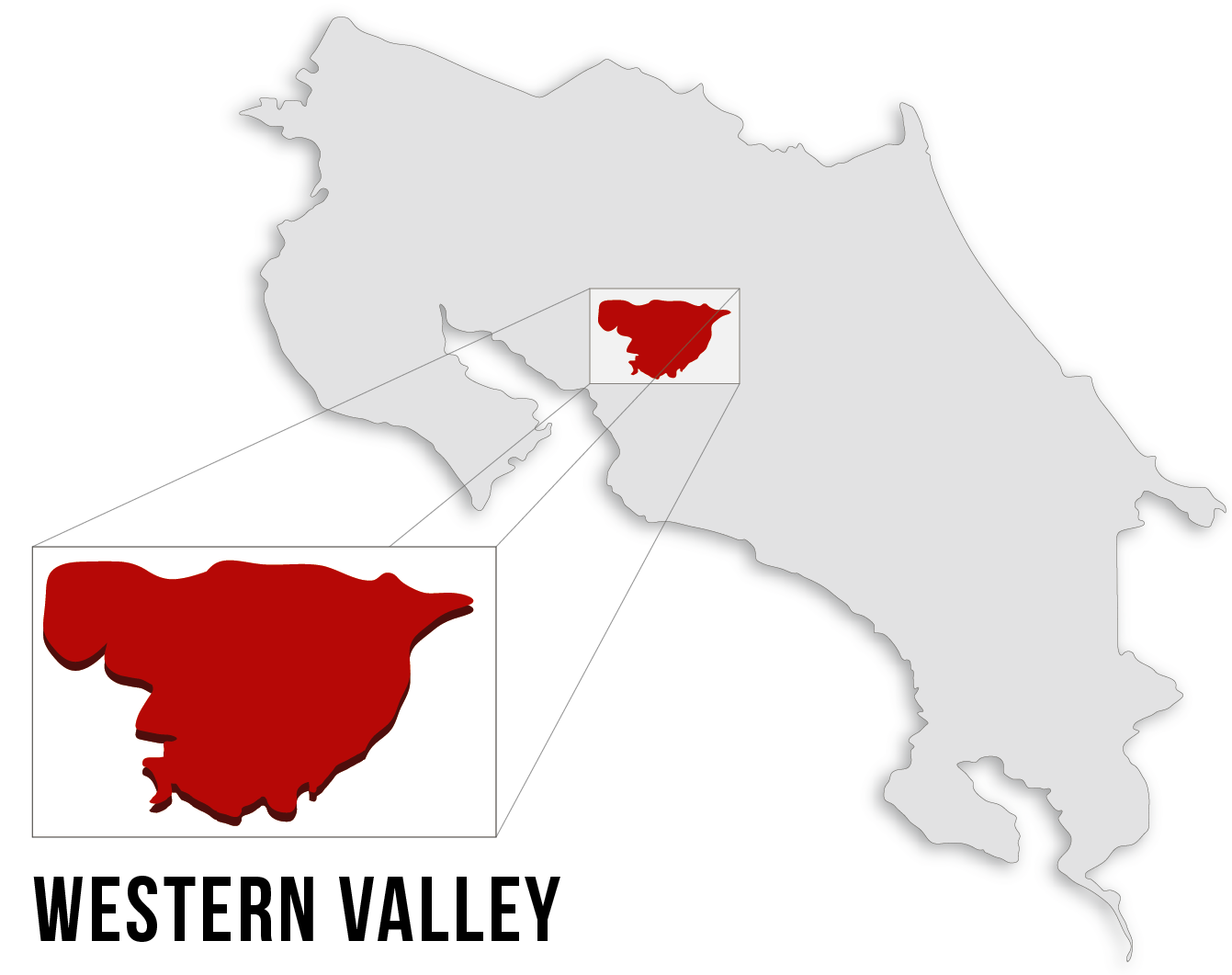
Central Valley
In the Central Valley are the provinces of San José, Heredia and Alajuela, an area of soils nourished by the Irazú, Barva and Poás volcanoes.
Climate characteristics:
With two well-defined seasons, wet and dry, the Central Valley has a total rainfall of 3,000 millimeters in 155 days a year and a humidity of 84%. The average temperature is 68 Fahrenheit.
Altitude:
From 800 to 1,600 meters above sea level.
Soils:
With soils enriched by volcanic ash, also rich in organic matter, it benefits moisture retention, distribution of the roots of coffee plants and better oxygenation. These characteristics allow to have strong plants and therefore coffees of excellence.
Harvest time:
From November to mid-March.
Cup Features:
It is a very balanced cup, chocolatey in its flavor, acidity: high and very fine, body: very good and aroma: very good.
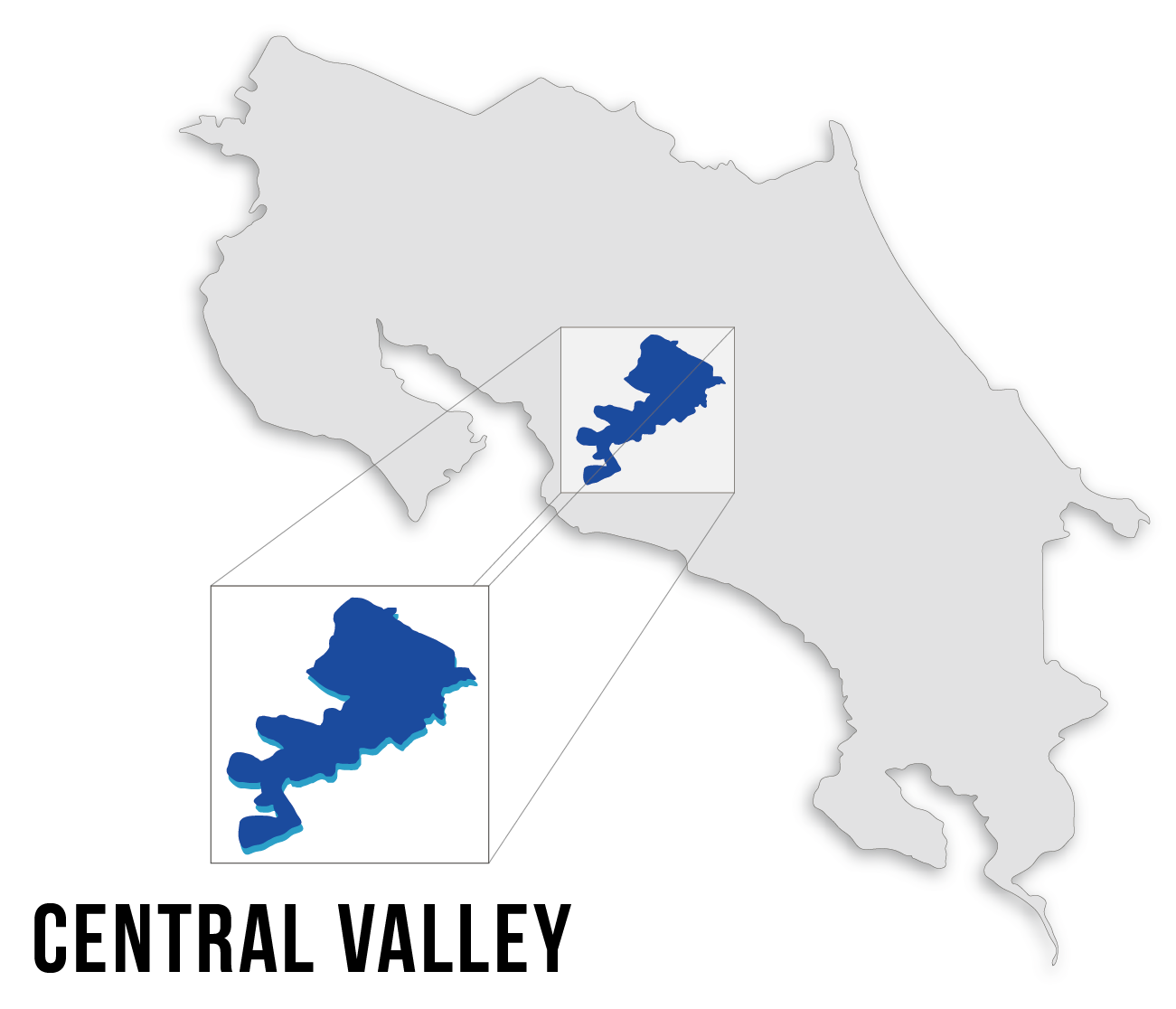
Tres Ríos
Weather Characteristics:
In this region it rains 155 days a year, with annual rainfall of 2,250 millimeters and a temperature of 69 Fahrenheit. It has well-defined dry and wet seasons. Tres Ríos is located on the Pacific slope.
Altitude:
From 1,200 to 1,650 meters above sea level.
Solis:
This area is considered very homogeneous in its soils, with tropical acidity soils, rich in organic matter and good texture.
Harvest Time:
August to February, coincides with the dry season.
Cup Features:
It is a cup with a balanced. Very high and fine acidity, very good body and very good aroma.
Los Santos – Tarrazu
Undoubtedly, Los Santos is the best-known coffee-growing region in Costa Rica and bears the name “Los Santos” because several of its towns bear names alluding to Christian saints: Santa María, San Marcos and San Pablo. Located in the province of San José, in the center-south of Costa Rica with a total area of 863 km2 and more than 50,000 of population.
This region is dedicated mostly to the cultivation of coffee, this being the main source of income; It is estimated that in Los Santos there are more than 20,000 cultivated hectares of coffee that produce close to 700,000 “fanegas”, more than seventy million pounds of green coffee beans.
The main varieties of coffee that are grown in the area are Caturra and Catuaí. Its raw grain is small, bluish color, good appearance, S.H.B. (strictly hard bean).
Climate Characteristics:
From the month of May to November (7 months) is the rainy season and from December to April (5 months) the dry season, a characteristic that favors the flowering of coffee. The annual average rainfall is 2,400 millimeters and an annual average temperature of 66 Fahrenheit.
Altitude:
From 1,200 to 1,900 meters above sea level. Aserri, Acosta have plantations at lower altitudes of 800 to 1,200 m a.s.l. Cartago and Desamparados with elevations from 1,200 to 1,700 m a.s.l., these are considered subregions of the Los Santos area.
Soils:
Soils of sedimentary origin, most of the crops are under shade.
Harvest Time:
From November to March.
Cup Features:
Good body, with a cup of high acidity, fine and not pungent, excellent aroma, characterized by an intense and slightly chocolate flavor, the latter being one of the most appreciated characteristics of the coffee from this important region.

Turrialba
In this region is located the largest coffee farm in Costa Rica, Aquiares Estate, a producing farm since 1890. This area is named after one of the active volcanoes in Costa Rica, the Turrialba Volcano. It is an area of early maturation; in Turrialba the first fruits of coffee are already in June.
This region is about 1,642 km2 in size and is located at the crossroads of the South Pacific, the Central Valley and the Caribbean Coast in the province of Cartago.
Its main varieties are Caturra and Catuaí Rojo, grown on more than 21,000 acres.
Weather Characteristics:
Its climate is influenced by the climate of the Atlantic slope and the Eastern Central Valley, this being the cause of the early maturation of coffee crops. It has a total rainfall of 2,600 millimeters a year and an average temperature of around 71 Fahrenheit.
Altitude:
From 600 to 1,300 meters above sea level.
Soils:
Soils of volcanic and alluvial origin, part of the crops are under shade.
Harvest Time:
From June to February.
Cup Features:
Acidity: normal, body: little, aroma: good. It is a special cup.
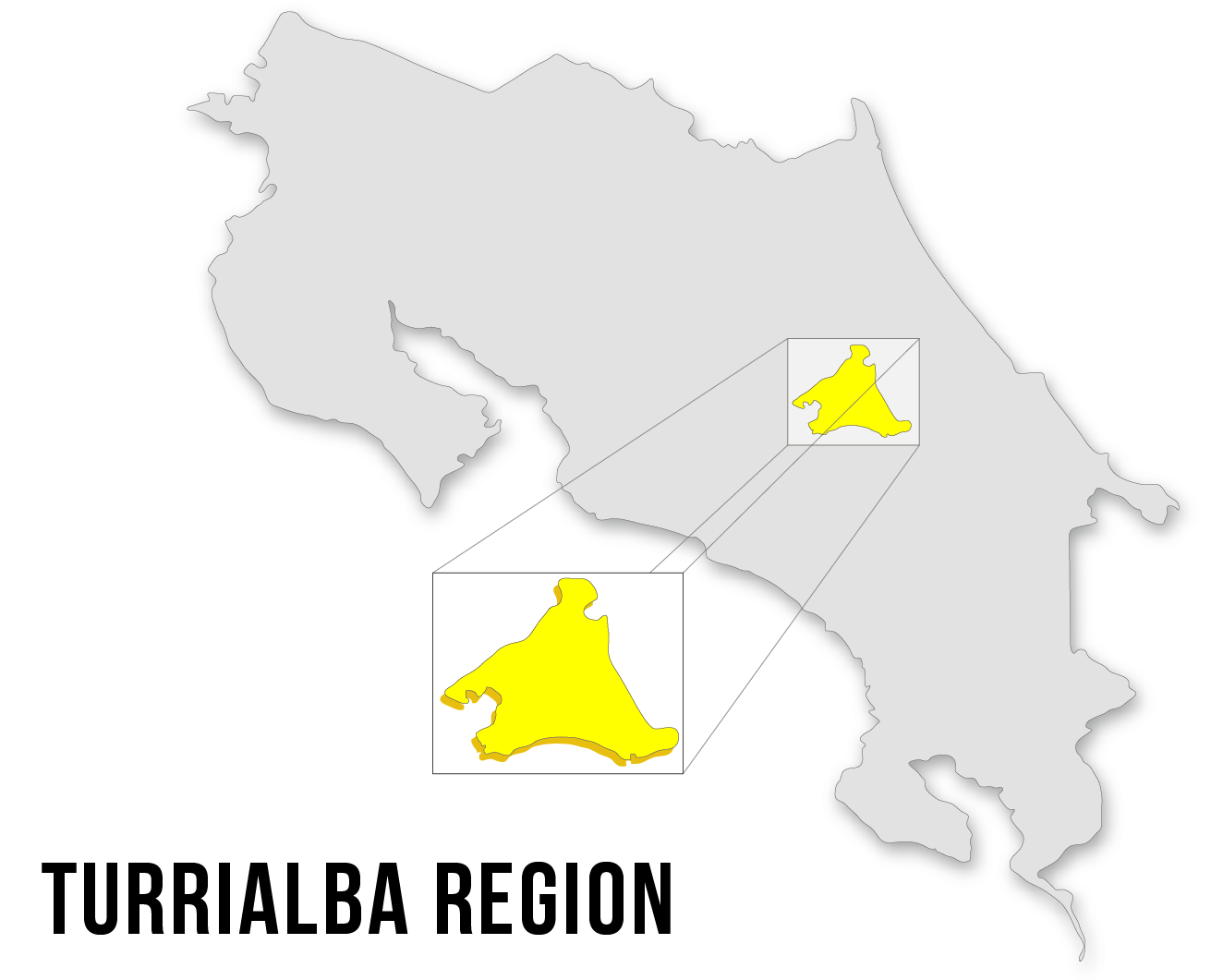
Orosí
In the mountains of Orosi there is a lot of forest, including biological and private reserves, as well as National Parks, which has helped the climate in this area to remain unchanged. Its extension is 315 km2.
Weather Characteristics:
It is considered a rainy area, it rains 210 days a year and annual rainfall exceeds 2,250 millimeters. The rainy season is from May to November, and the dry season from December to April. Its climate is influenced by the climate of the Atlantic slope, as well as the Pacific.
In Orosi we have three sub-regions: Orosi, Cachí Paraíso.
Altitude:
Orosi: From 1,000 to 1,400 meters above sea level.
Cachí: From 1,000 to 1,300 meters above sea level.
Paradise: From 1,200 to 1,350 meters above sea level.
Soils:
Volcanic and fertile soils.
Harvest Time:
Orosi and Paraíso: August to February.
Cachí: October to February.
Cup Features:
It is a cup of floral flavor, balanced. Medium to light acidity, good body and good aroma.
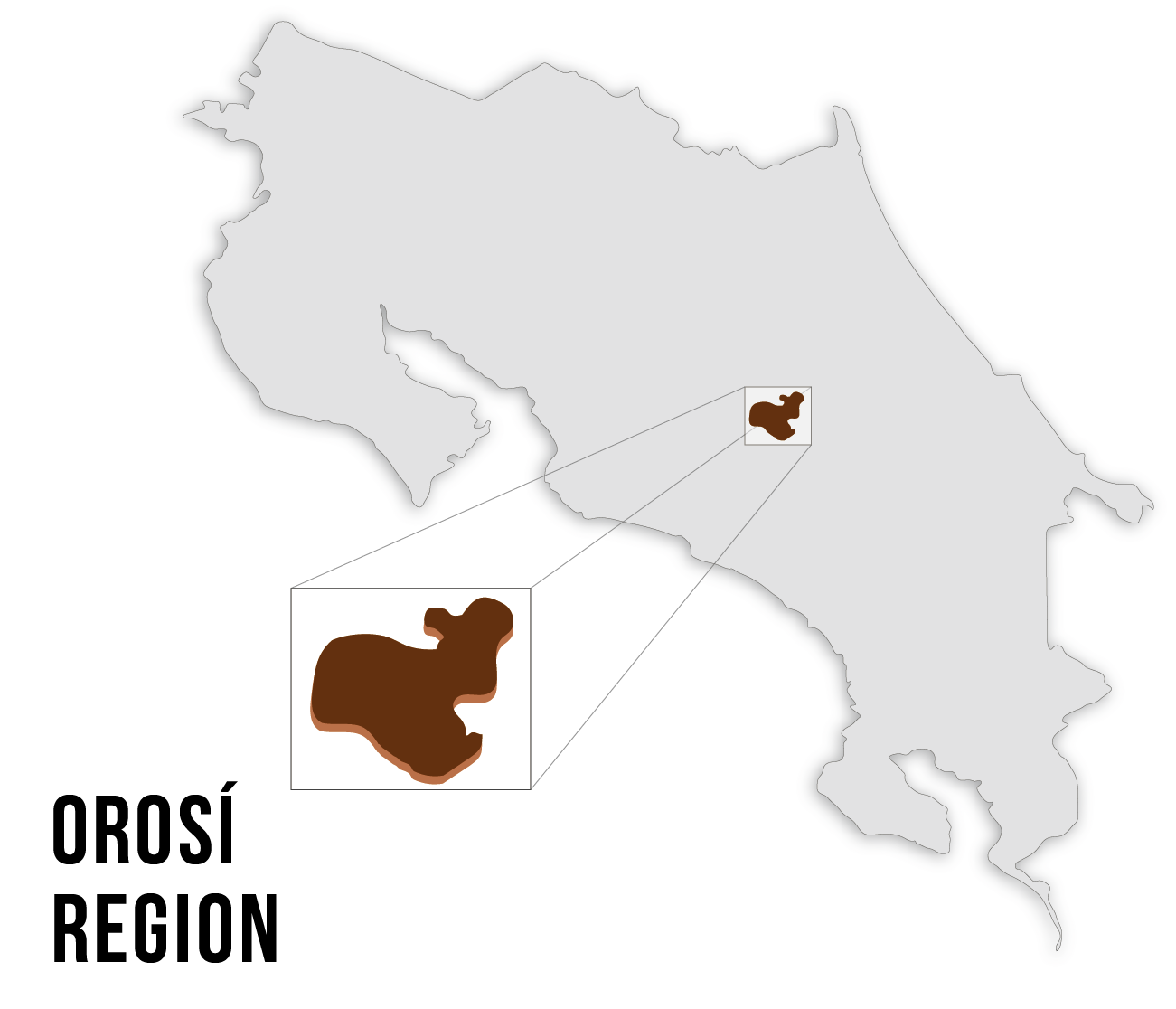
Brunca
Pérez Zeledón is a valley surrounded by mountains and rivers; Coto Brus is located next to the Talamanca Mountains, where there is the highest peak of Costa Rica, the Chirripó with 3,820 meters of altitude.
The coffee activity in this area has been of great contribution to its economy, there are more than 2,000 small and medium producers.
Climate Characteristics:
Coto Brus has 64 – 79 Fahrenheit temperatures while Pérez Zeledón can reach 93 Fahrenheit
Altitude:
From 800 to 1,700 meters above sea level.
Soils:
Brus Coto: Soils of volcanic origin, irregular lands with great presence of vegetation.
Pérez Zeledón: Valley surrounded by mountains and rivers with multiple microclimates.
Harvest Time:
From September to February.
Cup Features:
Excellent aroma, body and acidity.
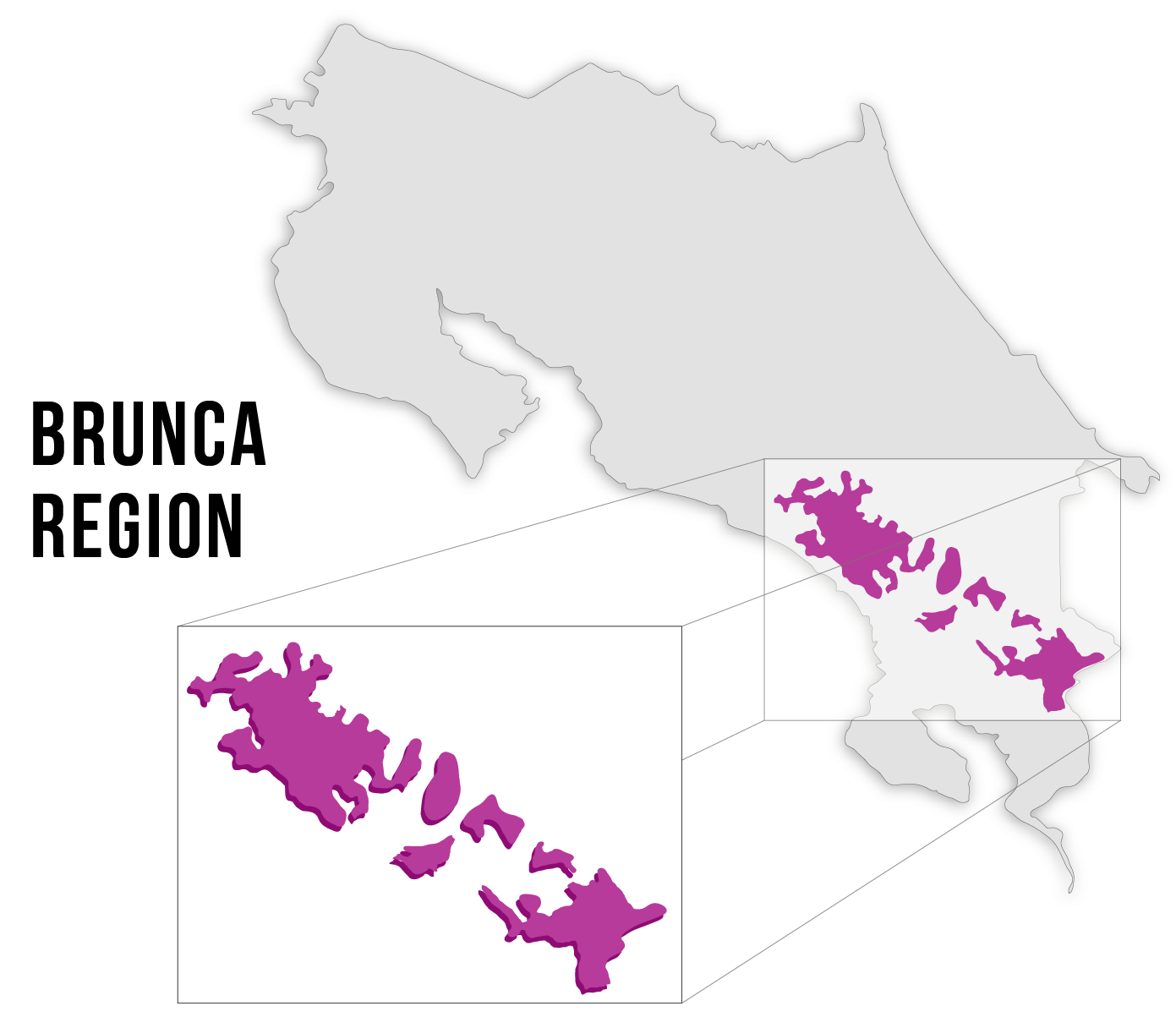
Contact
Email: sales@thedocnurse.com
Hours: M-F 8 am – 5pm
Office Locations
Costa Rica:
Miramar, Montes de Oro, Puntarenas.
U.S:
2250 NW 114TH AVE,
MIAMI, FL
Privacy Policies | Terms and Conditions
Copyright © 2021-2026 DocNurse LLC

